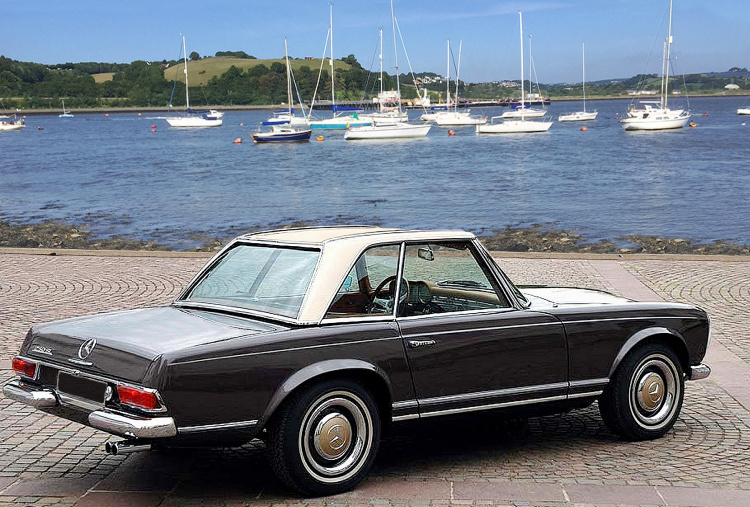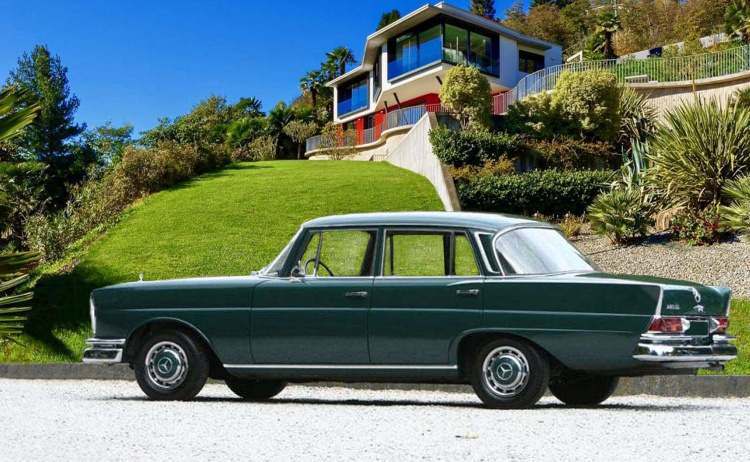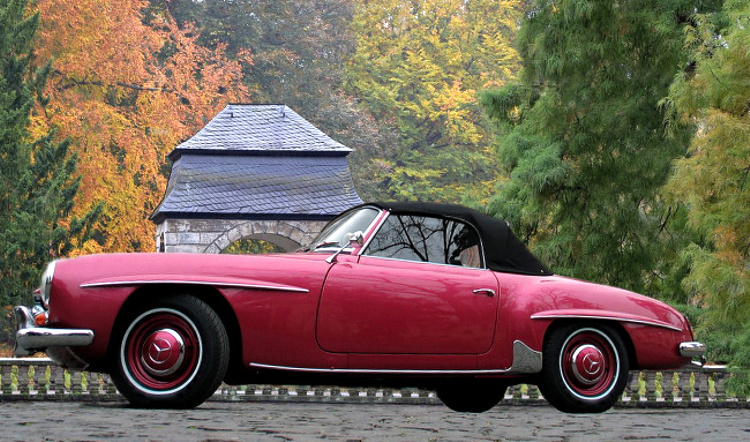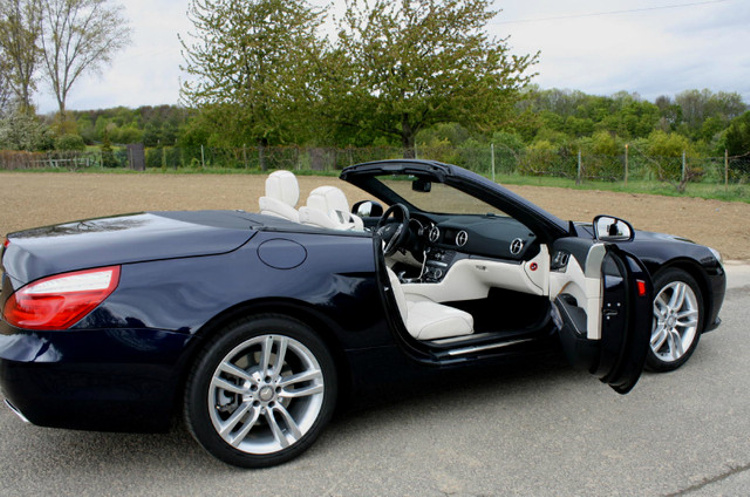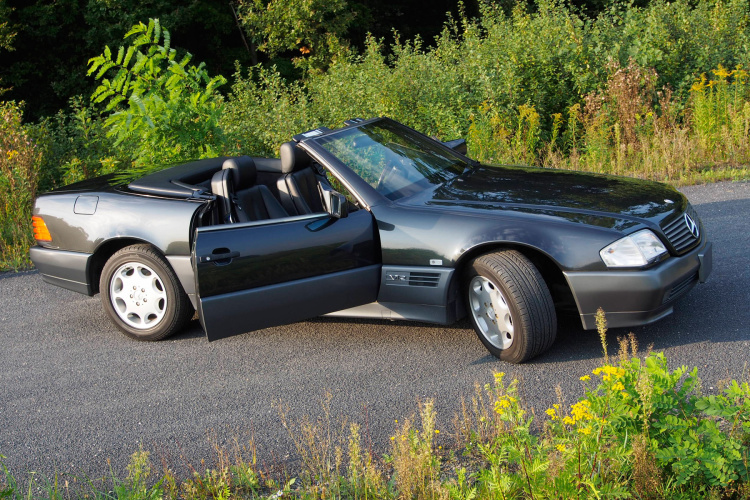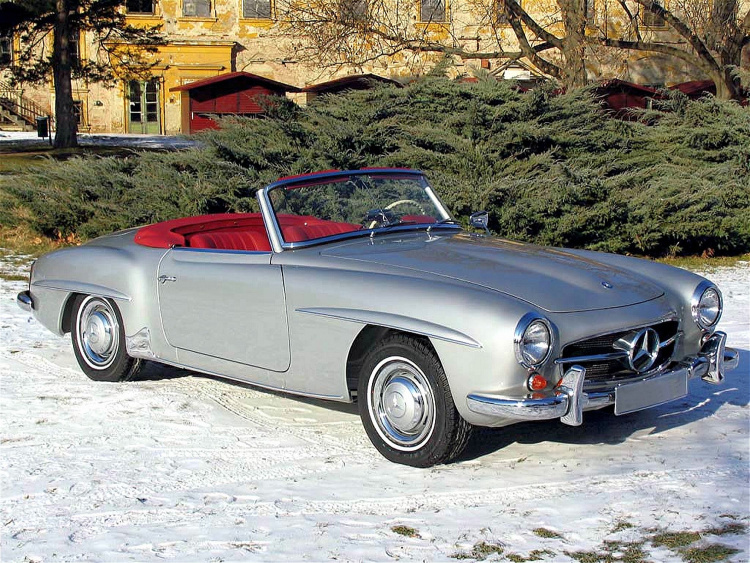Mercedes W113 SL, a controversial design idea
Mercedes W113 SL: At the end of the 1950s, Mercedes customers never had it so good, when it came to open motoring in style. For the truly luxury inclined, a big and luxurious four-door cabriolet was available in form of the most expensive car, Daimler-Benz had to offer, the 300d Cabriolet. In 1959 the car found 23 customers, who were willing to pay DM37,000 (US$9,250) for the automatic version. If you thought that a luxury cabriolet should never have more than two doors, the 220SE Ponton Cabriolet was the right choice for you and could be bought for DM23,400 ($5,850). In that year, around 270 customers made themselves very happy.
For the fast and furious, the 300SL Roadster was the ultimate driving machine. 211 units were sold in 1959 at a price of DM34,000 ($8,500), hardtop included. If you liked the looks of the SL but preferred something more docile, the 190SL could be yours for DM17,650 ($4,410), again hardtop included. 3,949 buyers liked this concept in 1959.
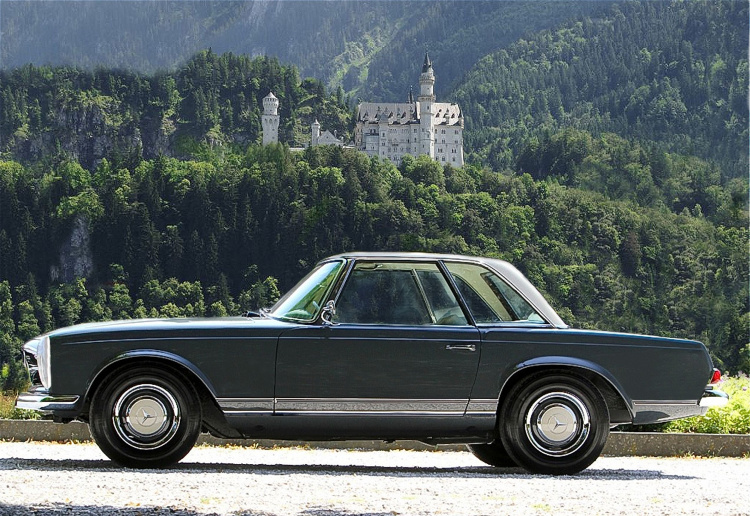
In mid-1963, that world had changed completely. None of these cars existed anymore. All four cars have been great for the image, but except for the 190SL, none of them had made the company much money. The company had accepted that, because they were needed to bring back the image the company had enjoyed before WWII.
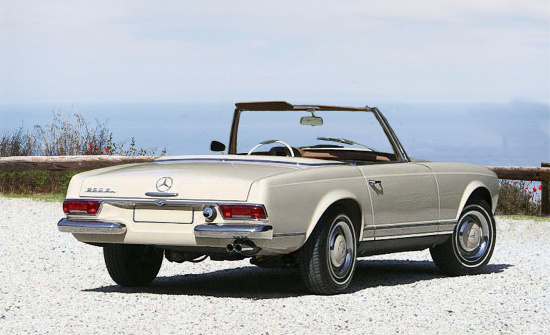
If there would be a new SL, and the 190SL was living proof that such a car could be sold in reasonable numbers, it had to be based on technology and parts from the sedans in order to make it profitable.
Mercedes W113 SL, a controversial design idea
When the Mercedes W113 SL was introduced in the early 1960s, this was a prosperous era with many different open car models to choose from. Mercedes was faced with the difficult task of replacing both the mighty 300SL and 190SL with a single successor. And to generate some excitement before the official launch at the Geneva Motor Show on March 14, 1963, management decided it would be a good idea to show the W113 to a select group of journalists before the event. That way, their stories would be out before the car’s official release date, and the public would be even more interested.
Of course, before the car was shown, no journalist knew whether it would be a new 300SL or a new 190SL. Naturally, they hoped for the former. When Professor Fritz Nallinger, chief engineer and member of the Daimler-Benz board, unveiled the 230SL, it was a bit of a shock for some of them. The roof was rather unusual, to say the least. But it was not only the roof that was surprising. It was also the engine capacity of the car. A 2.3 liter sports car? And for such a price?
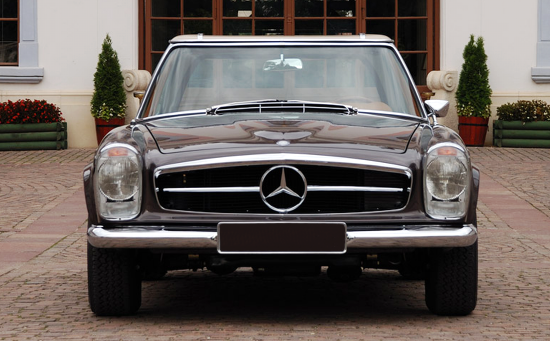
The Pagoda roof of the Mercedes W113 SL, once criticized, today it is its most distinctive feature
Of course, the Daimler-Benz management knew what they were doing. The 300SL was a perfect image booster, but it never made any money for the company, on the contrary. The 190SL Benz, on the other hand, was considered a bit too slow. So the new 230SL was conceived as a high performance touring sports car with excellent handling that could carry two passengers and their luggage in style, comfort and above all safety. Add to that Mercedes-Benz quality and they thought the car would sell quite well. So well, in fact, that they targeted an export share of nearly 80 percent!
The Mercedes W113 SL gets an unusual roof
But the roof took some getting used to. Erich Waxenberger, an engineer in Rudolf Uhlenhaut’s department, thought at first that a tree must have fallen on the top of the car. But it was not by chance that Mercedes safety guru Bela Barenyi came up with the idea of testing a concave roof design. He first had it tested on a limousine to be used as a platform for photographers to get an elevated view when taking pictures. He then turned to his colleague Paul Bracq to come up with a design that could be manufactured. Then he had to sell the idea to the board. This was one of the more difficult tasks. So they turned to their boss, Karl Wilfert. Extremely strong-willed, he was known for making the impossible possible.
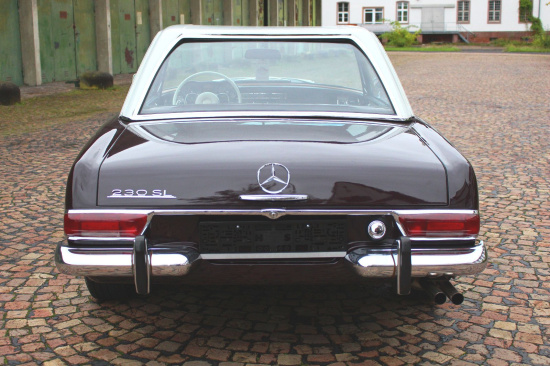
That the roof was a bit of an aerodynamic nightmare was conveniently overlooked. It just looked good, and today everyone with even the slightest interest in cars knows the name Mercedes SL Pagoda. Mercedes by the way never officially called the car “Pagoda”. The name first appeared in Austrian and French magazines.
The Pagoda SL comes with modern amenities
Although many of the technical features of the car were already known, it was the combination and improvements that made the car special. The chassis featured recirculating ball steering and a dual-circuit braking system. Girling disc brakes were mounted on the front axle, while vacuum-assisted Alfin drums were used on the rear axle. For the first time such a car could be ordered with power steering and, most surprising for most European journalists, an automatic transmission. Shocking!

Not only the press was surprised, but also most European customers. For them, a sports car with an automatic transmission was simply unthinkable. So it was no wonder that only a few automatic Mercedes SL were sold in Europe. Americans of course thought differently, most of their cars were equipped with automatic transmissions, so this extra for the Mercedes SL made perfect sense to them. And since the North American market was essential to the success of the car, it had to be offered.
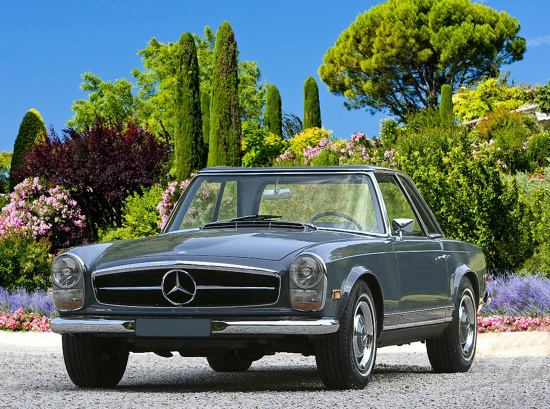
The 2,308 cc M127.II inline-six engine produced 150 hp at 5,500 rpm and 196 Nm (145 lb?ft) of maximum torque at 4,200 rpm. It was based on the old M180 engine with four main bearings and mechanical Bosch six-plunger fuel injection. The engine had been seen first in the 220 W187.
Standard equipment was a four-speed manual transmission with a 3.75:1 ratio. It was the same as in the 220SE Sedan, but with a shorter first gear for faster acceleration. As this was not universally appreciated, the manual transmission was adopted for the new 250S/SE in 1965.
Here is a brief chronology of the changes that occured during the 230SL production:
- 10/1963: Automatic transmission was made available
- 09/1964: Spare tire well was removed and the spare tire now mounted horizontally
- 11/1964: Optional tinted/thermal glass becomes available
- 08/1965: Some harmonization with new W108 sedans, incl. new floor panels, combined brake and clutch fluid reservoir and minor interior adjustments. US models came eqipped with hazard lights
- 03/1966: Mounts for three-point seat belts were added
- 05/1966: Optional ZF 5-speed manual transmission was offered (but rarely chosen)
The 250SL arrives
After the introduction of the six-cylinder 250 Sedan, the 230SL was upgraded to the 250SL. Its larger M129.II engine had the same power output but reduced the rather modest performance at low revs as its torque improved from 197 Nm (145 lb?ft) to 216 Nm (159 lb?ft) at 4,200 rpm. A wider power band of the larger engine resulted in noticeably improved performance, as the 230SL engine was known to rarely produce more than 143 hp.
Unfortunately, the power plant suffered initially from reliability problems at sustained high speeds. This problem was quickly solved by Mercedes. But at the same time the car became known for its relatively high fuel consumption.
Stricter safety regulations and US emission laws required a couple of changes, which were introduced in August 1967. The safety improvements included:
- Collapsible steering wheel
- Padded wheel hub
- Concave control knobs
- Elastic black rubber heater levers
- Softer, rounded dash top padding
Door handles, locks, and window cranks were also slightly modernized, and the door pockets were now elastic. The rear-view mirror frame was changed from chrome to black plastic. And the side view mirrors became more angular.
Side reflectors on the fenders, and Kangol three-point seat belts were used on all models exported to the US. The automatic gearbox shift quadrant was adjusted with “P” now at the top and not anymore at the bottom. And the chrome horn ring was changed to a matte finish.
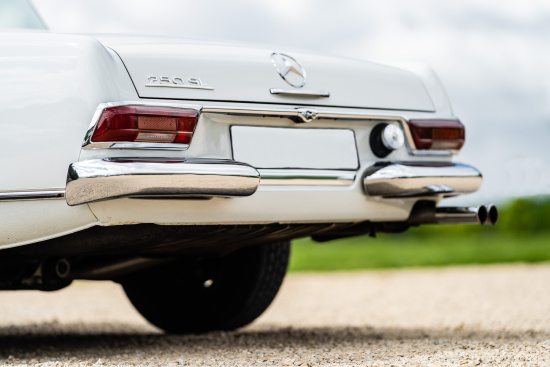
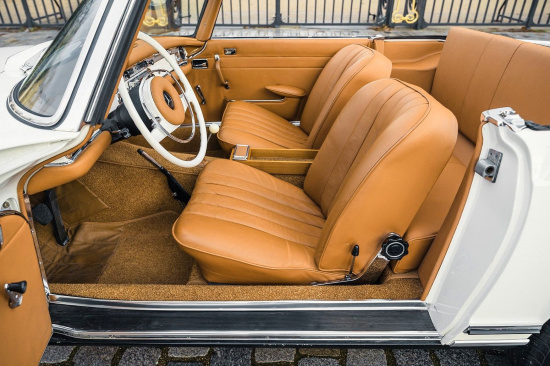
An interesting and very rare car is the 250SL California Coupe. It was introduced in 1967 and did not have a soft top. Instead, it had a second, cramped row of seats. Most of them are today converted to standard roadsters
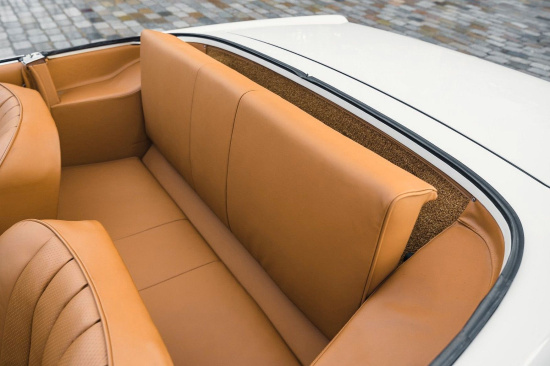
Introducing the last Mercedes W113 SL version, the 280SL
After only one year it was replaced by the larger and more powerful 2.8 liter SOHC M130 engine of the Mercedes Benz 280SE. It offered 170 hp at 5,750 rpm and 244 Nm (180 lb?ft) of maximum torque at 4,500 rpm. This way it did not only delivered more low-end torque but also improved fuel economy.
For the power increase the bore had to be increased by 4.5 mm (0.2 in). This stretched the limits of the M180 block, and required pairwise cylinder casts without cooling water passages. Therefore an oil-cooler was needed, which was fitted vertically next to the radiator.
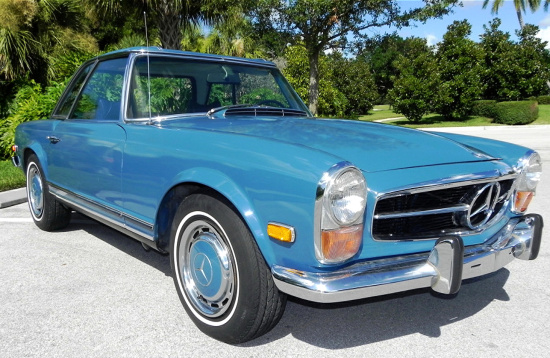
The Mercedes W113 SL was in North America as popular as in Europe
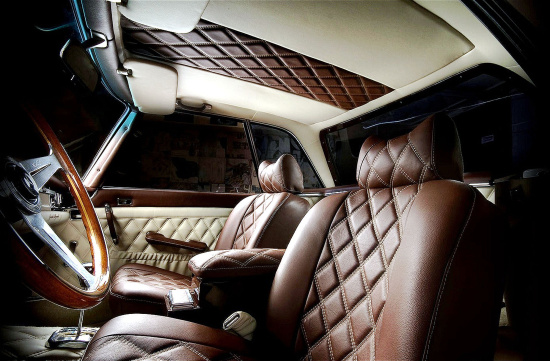
Pretty rare are interior conversions like this one from Vilner
Here are some of the changes made to the 280SL:
- 12/1967: One piece wheel-covers in line with all other Mercedes models
- 10/1968: US models came with sealed beam headlights without fog lights
- 02/1969: New tail lights had amber turn signals
- 05/1969: The rarely ordered ZF 5-speed manual transmission was discontinued
- 07/1969: US models had headlights with full amber lower section, illuminated side markers, improved emission control and transistorized ignition
- 08/1969: Heated rear window for hardtop, hazard lights for all models, single master key was introduced for all locks
- 04/1970: Headlights could be ordered with halogen main beam
- 11/1970: Opaque beige plastic coolant expansion tank (instead of satin-black paint over brass)
With a base price of DM22,800 ($5,700), the 250SL was only slightly more expensive than the 230SL. The 280SL was DM1,500 ($375) more expensive than its predecessor. In the USA the 280SL cost about $7,500 without extras. In the UK, it started at around £3,920. People did not mind though, they appreciated the latest package and made the 280SL the best selling version of the three. Here is a sales breakdown of the individual models:
- 230SL: 19,813
- 250SL: 5,196
- 280SL: 23,885
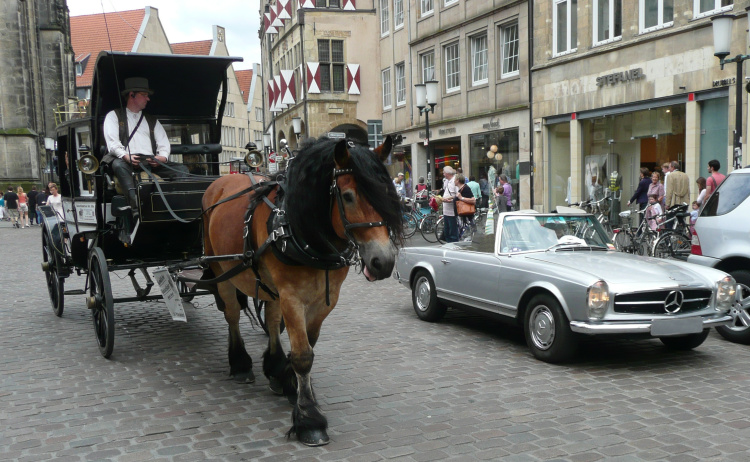
If you want to read more about the development and history the Mercedes W113 SL, the book and e-book can be ordered here. It also comes with a comprehensivebuyer’s guide and explains in detail the chassis number and data card. Many new color photos show you intersting details of these great cars. This includes pictures of the suspension.
The above link leads you to the US Amazon site. The book’s title is the same on Amazon sites in other markets.
A German version of this book is available here.
